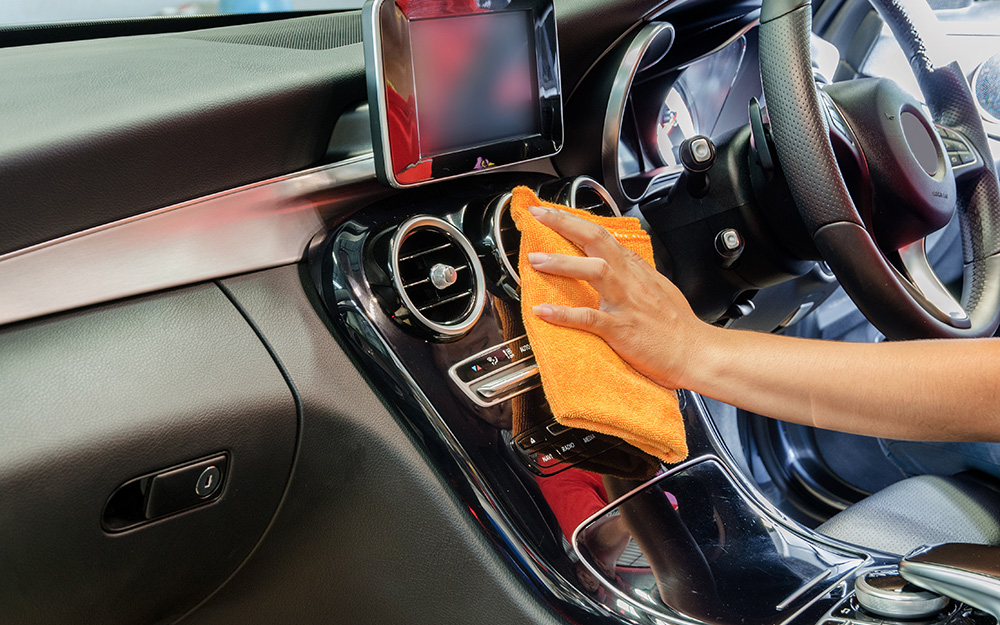How Can Car Interior Detailing Improve Your Driving Experience?
When it comes to car maintenance, most drivers focus on the exterior—waxing the car, washing off dirt, and keeping the tires in check. However, the interior of your car plays an equally important role in your driving experience. Car interior detailing is a service that goes beyond regular cleaning, providing deep cleaning and restoration to your vehicle’s interior surfaces. This process not only improves the aesthetics of your car but also enhances comfort, health, and safety while driving.
What is Car Interior Detailing?
Car interior detailing is a comprehensive cleaning process aimed at deep cleaning all the surfaces inside your vehicle. This includes seats, carpets, upholstery, dashboard, door panels, and other hard-to-reach areas that normal cleaning might miss. Interior detailing often involves specialized tools and products to remove dirt, stains, odors, and grime, leaving your car looking brand new.
Unlike regular car cleaning, interior detailing addresses both cosmetic and functional aspects, ensuring the vehicle’s interior is as clean and comfortable as possible.
Benefits of Car Interior Detailing
1. Enhanced Comfort
A clean and organized interior can make your driving experience far more pleasant. When you have a clean dashboard, seats, and windows, the overall ambiance of your car feels fresher and more inviting. Interior detailing helps remove dirt, dust, and allergens that can accumulate over time, leaving you with a comfortable and hygienic space. This is especially important for long drives where comfort is key to enjoying the ride.
2. Improved Air Quality
Over time, dust, pet dander, pollen, and other allergens build up inside your car, affecting the air quality. When your car’s interior is thoroughly cleaned, it helps remove these particles, reducing allergic reactions and improving the air you breathe. In addition, cleaning the air vents and the cabin air filter ensures that the air circulating within the car is free of pollutants, making your drive healthier.
The Process of Car Interior Detailing
1. Vacuuming
Vacuuming is one of the first steps in interior detailing. It’s important to thoroughly vacuum the carpets, seats, and even the crevices between the seats to remove dirt, crumbs, and debris that are not visible to the naked eye. Vacuuming ensures that the cleaning process is thorough, preparing the surfaces for deeper cleaning.
2. Shampooing Upholstery and Carpets
Shampooing the carpets and upholstery is an essential part of the detailing process. This step helps to remove stains, dirt, and odors embedded within the fibers. Professional detailing services use specialized cleaners and steam extraction techniques to lift stubborn stains without damaging the fabric.
3. Cleaning the Dashboard and Console
The dashboard and center console often accumulate dust and grime. A detailed cleaning of these surfaces not only restores the visual appeal but also ensures that no dirt gets trapped in the controls and vents. This process includes wiping down all hard surfaces, including the steering wheel, cup holders, and gear shift, with products that protect against UV damage and fading.
4. Leather Care and Conditioning
For vehicles with leather seats, interior detailing often includes conditioning treatments to keep the leather supple and prevent cracks. This process involves cleaning the leather with specialized products that remove dirt while adding a protective layer to maintain its appearance and feel.
How Car Interior Detailing Enhances Safety
1. Visibility
A clean interior increases visibility and reduces distractions. By detailing your windows and mirrors, you can ensure that there are no smudges or grime blocking your view. A clean dashboard and clear screens also help reduce glare and reflections, offering a safer driving experience.
2. Preventing Damage
Dirt, dust, and other debris that are left unchecked in the interior of the car can damage surfaces over time. For example, dust buildup on the dashboard can lead to fading, cracking, or discoloration. Detailing protects your car’s surfaces and prevents premature aging, extending the life of the vehicle’s interior.
3. Reducing Odors
Stale air and unpleasant smells can make driving uncomfortable. Detailing includes deodorizing treatments to remove any lingering odors caused by food, pets, or smoke. This ensures that your car remains fresh and inviting, which is essential for both short commutes and long road trips.
Psychological Benefits of a Clean Car Interior
1. Stress Relief
A cluttered, dirty car interior can cause stress and discomfort, especially when you’re spending a lot of time in your vehicle. Car interior detailing provides a clean, organized space, promoting a sense of calm and well-being. Driving in a tidy car can create a positive mindset, helping you feel more relaxed and in control of your environment.
2. Boosting Confidence
Driving a clean car can also increase your confidence. When your car looks well-maintained, you feel good about it and take pride in it. This can translate to a more enjoyable driving experience, as you feel more comfortable and at ease in your vehicle.
Car Interior Detailing vs. Regular Car Cleaning
1. Depth of Cleaning
Car interior detailing goes beyond a standard cleaning routine. While regular cleaning might involve quick wipe-downs and vacuuming, detailing includes deeper attention to detail, focusing on every nook and cranny of the car. The use of specialized products and techniques ensures a more thorough cleaning that is both cosmetic and functional.
2. Long-Term Benefits
Unlike regular car cleaning, which may only address surface-level dirt, interior detailing ensures that all parts of your car remain in top condition. Over time, this can help maintain the value of your vehicle, protect its surfaces, and reduce the need for costly repairs.
Cost of Car Interior Detailing
The cost of car interior detailing varies depending on the size of your vehicle, the services included, and the detailer you choose. Typically, it can range from $100 to $250. However, the investment is worthwhile, as it not only restores the appearance of your car but also helps maintain its longevity. A clean car is less prone to wear and tear, and the overall driving experience improves significantly.
How Often Should You Get Your Car Detailed?
The frequency of car interior detailing depends on several factors such as how often you drive, the climate in your area, and the overall condition of your car. For most people, detailing every 6 months is ideal. However, if you live in an area with heavy dust or have young children or pets, more frequent detailing may be necessary.
Conclusion
Car interior detailing is more than just about making your car look good—it’s about improving the overall driving experience. From enhancing comfort and air quality to increasing safety and boosting your psychological well-being, a detailed interior offers numerous benefits. Regular detailing ensures your car stays in top condition, prolongs its lifespan, and makes every drive a more pleasant experience. Whether you’re looking to remove stains, eliminate odors, or simply enjoy a cleaner car, interior detailing is an investment that pays off in many ways.
FAQs
1. How long does car interior detailing take?
The duration of the detailing process varies based on the size of the vehicle and the level of detail required. On average, it can take anywhere from 2 to 4 hours to complete the interior detailing process.
2. Can I detail my car’s interior myself?
While some basic cleaning tasks can be done at home, such as vacuuming and wiping down surfaces, professional interior detailing offers a more thorough clean. Professionals use advanced tools and cleaning solutions that are not typically available to consumers.
3. Is car interior detailing worth the cost?
Yes, interior detailing is worth the investment, especially if you want to maintain your car’s value, extend the lifespan of the interior surfaces, and improve your comfort while driving. Regular detailing can also help maintain a fresh and healthy driving environment.


